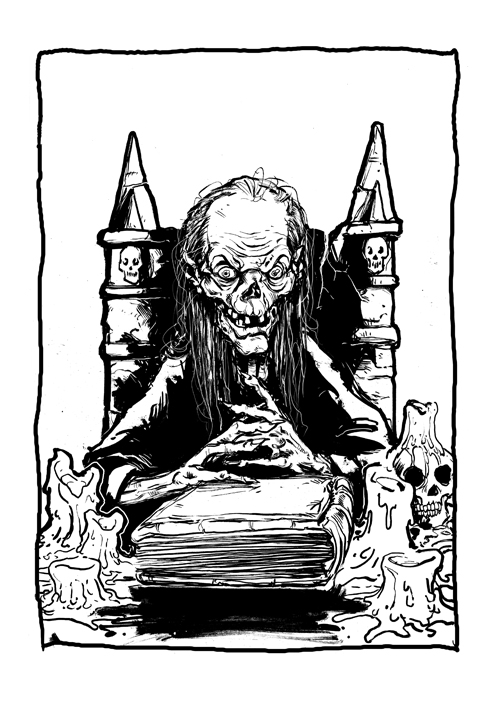This week, a good friend of mine sent me an adventure he wanted to run for his friends. The plot was really good, very ambitious, full of role-play and backstabbing potential. Oh yeah! It was set in Golarion's Cheliax.
Yes.
Too bad I could not play in it. But his stuff was NICE. Very, very nice. However, one thing I lamented (and I told him): too much boxed text. Entire encounters were pre-written with only minor interaction by PCs, making it effectively a novel with a few breaks. Seriously its not THAT bad, but you get the basic idea.
Adding to that, many GM become very stiff and static when they see boxed text, and mindlessly read what is in front of them.
 1- Use boxed text to set the scene, not the action Your boxed text should include only what is exactly needed to set the scene. Focus on the high points and what they might use or that has relevance. I like to think of this as Tales from the Crypt telling us where we are now, but he quickly fades and lets the action unfold.
1- Use boxed text to set the scene, not the action Your boxed text should include only what is exactly needed to set the scene. Focus on the high points and what they might use or that has relevance. I like to think of this as Tales from the Crypt telling us where we are now, but he quickly fades and lets the action unfold.
2- Pique the PC's interest, don't flood them A common mistake and one I have been VERY guilty of over the years. By using this principle, point out the elements that appear out of place, with a goal of letting the PCs return and examine those later.
It's okay to say that the walls are covered with tapestries, there is rarely a need to describe each of them. At least until the PCs decide to examine them. Then you can provide a more detailed description.
3- Start big, finish small When describing a scene focus on elements that get PCs thinking about where they are. Then you can elaborate on the unique elements and finish by what is most likely to generate a reaction from them. Never mention the treasure or threatening monsters first.
 4- Avoid the rolling boxed text The rolling boxed text often appears when an NPC appears, speaks, then the boxed text breaks to "Allow the PCs to agree" then continues. Rather than that, have the NPC give the essential of what is needed, and let the PCs ask questions. It makes for a scene that is more dynamic and interesting to play. Forcing the PCs to ask questions creates a dynamic around the table where the can each get into character in a fairly safe place. The NPC usually WANTS to interact with them so they can get into the game.
4- Avoid the rolling boxed text The rolling boxed text often appears when an NPC appears, speaks, then the boxed text breaks to "Allow the PCs to agree" then continues. Rather than that, have the NPC give the essential of what is needed, and let the PCs ask questions. It makes for a scene that is more dynamic and interesting to play. Forcing the PCs to ask questions creates a dynamic around the table where the can each get into character in a fairly safe place. The NPC usually WANTS to interact with them so they can get into the game.
One small trick? Never have the NPC specify the payment in an employment boxed text. This ALWAYS leads to either: PCs bargaining for more OR arguing over the value, either case, it breaks the flow of the discussion. And getting back "on-track" rarely feels natural and few PCs care about the rest of the details. They heard money. They want more. The GM is now droning on like the teacher in Peanuts, because they feel cheated.
5- You have too much of it Doesn't matter what you think, chances are you could trim your boxed text. There is too much of it and you could reduce some of it.
For all the love I have for some fellow writers, many of them put too much in there. Doesn't make their products any less enjoyable, but it makes part of their adventures... well more difficult to follow and gives a 'low-point' to what happens.
Compare the following:
Description #1 "Visible rafters only add to the cavernous aspect of the throne room. Tapestries and wooden sculptures break the stark grey monotony of the stone walls. Courtiers and men-at-arms of all races stand around a raised dais upon which sits a rotting lich."
With this:
Description #2 "A rotting lich sits on a dais in the center of the room, surrounded by a cadre of dwarven and elven courtiers with human and orc soldiers wearing plate mails. The decor of the room is elegant, rich, and dominated by long tapestries depicting hunting scenes where skeletal beings hunt men and women as wooden gargoyle sculpture look down on the assembly.
How many players will actually know of care what's on the tapestry? They will be too busy rolling for initiative.
Don't believe me?
Try it.
JP

No comments:
Post a Comment